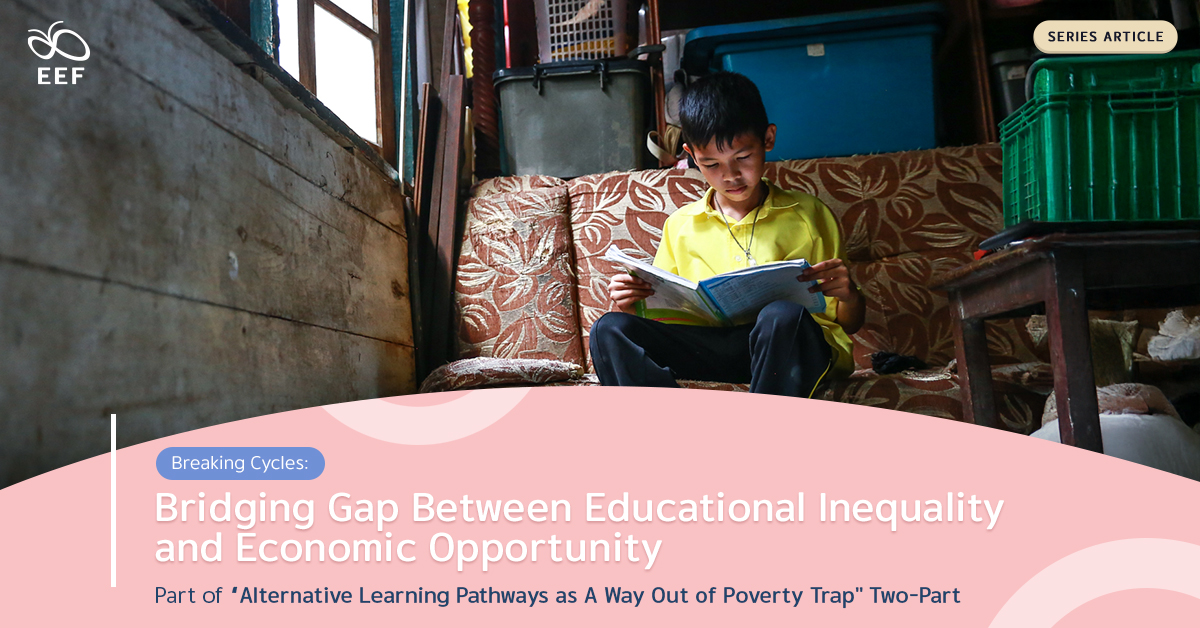
Addressing educational inequality remains a formidable challenge in Thailand, one that has persisted for decades. Despite ongoing discussions, the issue continues to trap children outside the educational system, thus preventing them from breaking free from poverty. This not only affects individual lives but also severely impacts the national economy. The question remains: how can vulnerable children access education, secure sustainable livelihoods, and improve their futures? Are alternative learning pathways a viable solution?
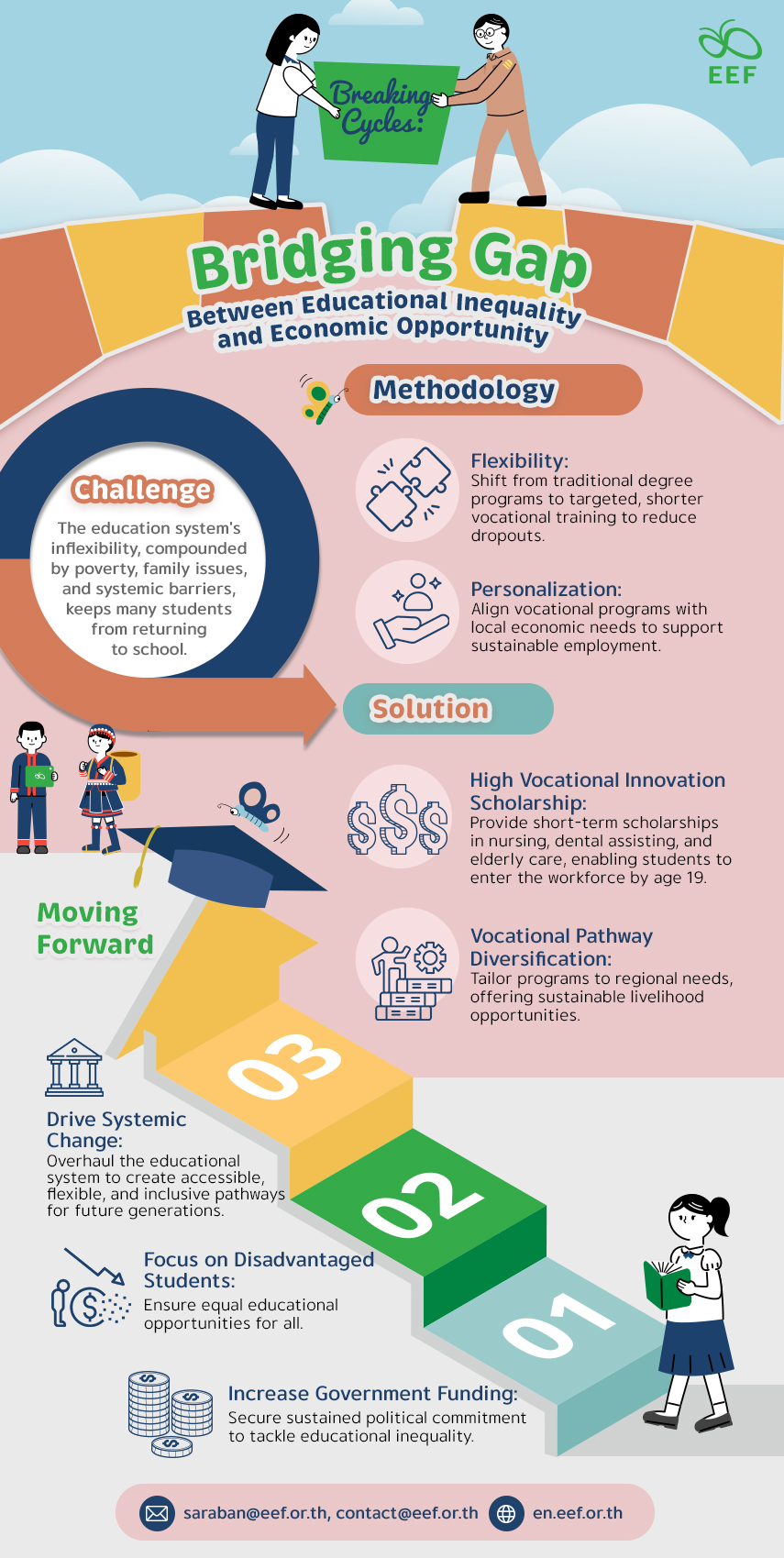
Breaking Cycles: Bridging Gap Between Educational Inequality and Economic Opportunity
Challenge
The education system’s inflexibility, compounded by poverty, family issues, and systemic barriers, keeps many students from returning to school.
Methodology
- Flexibility: Shift from traditional degree programs to targeted, shorter vocational training to reduce dropouts.
- Personalization: Align vocational programs with local economic needs to support sustainable employment.
Solution
- High Vocational Innovation Scholarship: Provide short-term scholarships in nursing, dental assisting, and elderly care, enabling students to enter the workforce by age 19.
- Vocational Pathway Diversification: Tailor programs to regional needs, offering sustainable livelihood opportunities.
Moving Forward
- Increase Government Funding: Secure sustained political commitment to tackle educational inequality.
- Focus on Disadvantaged Students: Ensure equal educational opportunities for all.
- Drive Systemic Change: Overhaul the educational system to create accessible, flexible, and inclusive pathways for future generations.
The issue of out-of-school children in Thailand is a growing crisis, driven by poverty, family problems, and systemic barriers that further exclude many from education. Reform is urgently needed to address dropout rates and ensure that all students have access to education. The current system’s lack of flexibility leaves many students with no path to return to school, particularly when traditional education fails to meet their needs. This raises the critical question: Would reducing the length of education from four years to just six months or two years increase the chances of students escaping poverty?

The EEF has proposed the High Vocational Innovation Scholarship to the Thai Cabinet. This initiative offers short-term scholarships for vocational courses in fields like nursing assistance, dental assistance, elderly care, and other skill-based professions. These one-year programs, aimed at Grade 12 graduates, provide a pathway to the workforce by age 19, enabling students to secure stable employment and a living wage. By helping dropouts return to education and enter professions in demand, particularly in Thailand’s wellness sector driven by an aging population, the initiative not only supports individual livelihoods but also addresses national workforce shortages.
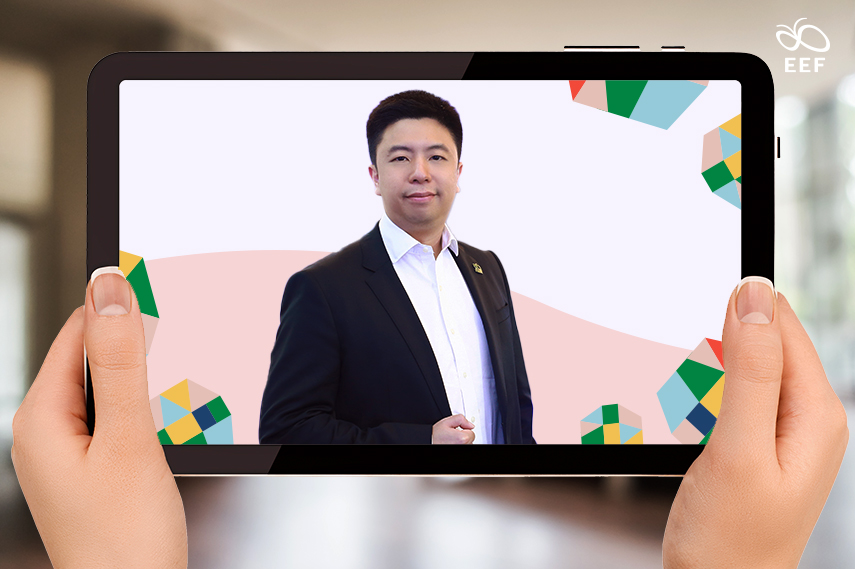
Dr. Kraiyos Patrawart highlighted the challenges faced by students, sharing a revealing quote from a young learner: “A student said they would not be willing to return for another three years. Instead, they’d prefer to start working. One year of education, with a guaranteed job, seemed much more acceptable.” This sentiment reflects the urgent desire for a rapid exit from poverty. In response, the EEF has focused on short-term vocational programs like nursing and dental assisting, which enable students to graduate and gain stable employment in just one year, aligning with the growing demand for skilled workers in healthcare and wellness.
However, vocational opportunities should not be limited to wellness careers alone; the Managing Director emphasized the need for diverse vocational pathways tailored to regional economic needs. Fields like yacht repair, beekeeping, and modern agricultural technology offer significant potential. For example, yacht repair in regions like Phuket and Pattaya provides a clear opportunity: “Many high-end yachts require regular maintenance due to exposure to the sun. We found a training program in Phuket that equips students with the skills to maintain and repair yachts.” This localized approach allows students to enter the workforce quickly, with career paths that include roles as technicians, yacht captains, or even business owners. Aligning education with local needs strengthens regional economies while supporting sustainable livelihoods
Dr. Kraiyos Patrawart also pointed out that the educational system is evolving towards more diverse learning models, diminishing the emphasis on traditional degrees for career success. As a result, efforts to tackle school dropouts are shifting from reintegration into traditional schools to offering alternative, more accessible educational options. However, challenges remain; for top-tier institutions, there is an opportunity cost to supporting these alternative pathways, and universities need to play a bigger role in collaborating to support disadvantaged students.
The Managing Director explained the stark contrast between students from affluent backgrounds, who typically pass university entrance exams and are well-prepared, and those from low-income families who often face significant hurdles, such as lack of access to financial support and vocational training. “Students from low-income backgrounds, many from families with limited education, are often unfamiliar with managing money. A monthly stipend of 6,500 Thai Baht can be life-changing,” he noted, emphasizing the importance of providing adequate support to students from disadvantaged communities.
The challenges are particularly evident in rural areas like Khon Kaen (The Northeast of Thailand), where dental assisting student recruitment faced skepticism from their communities. Parents, initially wary of the profession, were convinced through the use of university-marked vehicles to build trust. Overcoming this resistance is essential for helping these students escape poverty, underscoring the need for a collaborative effort to change attitudes and build long-term support networks.
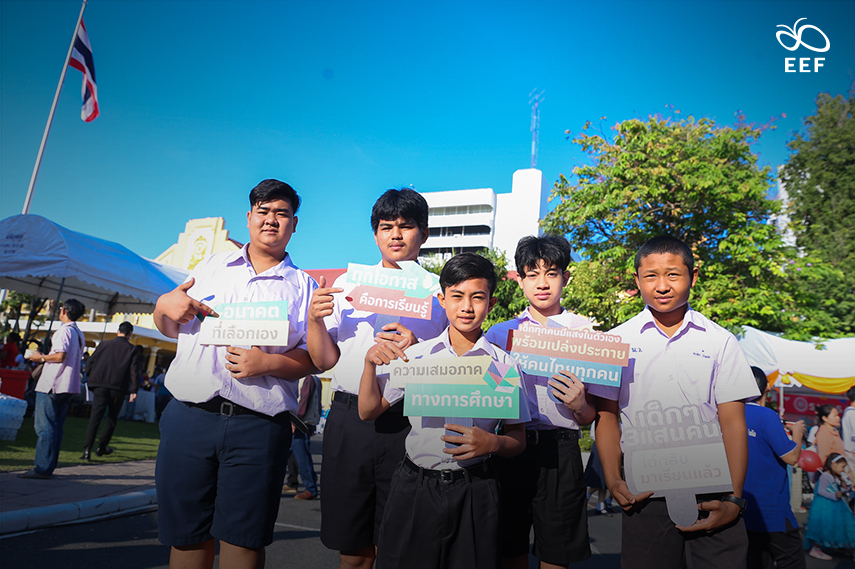
In closing, Dr. Kraiyos Patrawart stressed the need for increased government funding and called for universities to develop curricula tailored to disadvantaged students and dropouts. He also pointed out a troubling trend in political discourse, where education issues are often sidelined after election periods. “While education is often highlighted during elections, it loses priority once the votes are counted. This pattern, seen across multiple governments, hinders real progress,” he said.
The interview with Dr. Kraiyos Patrawart concluded with a call for sustained political commitment to tackle educational inequality. He warned that without continuous, long-term investment, Thailand risks being trapped in short-term policies that fail to address the root causes of inequality. Addressing these issues could yield significant economic benefits, such as a 1.7% increase in GDP, through higher lifetime earnings and improved opportunities for students to surpass their parents’ educational achievements.
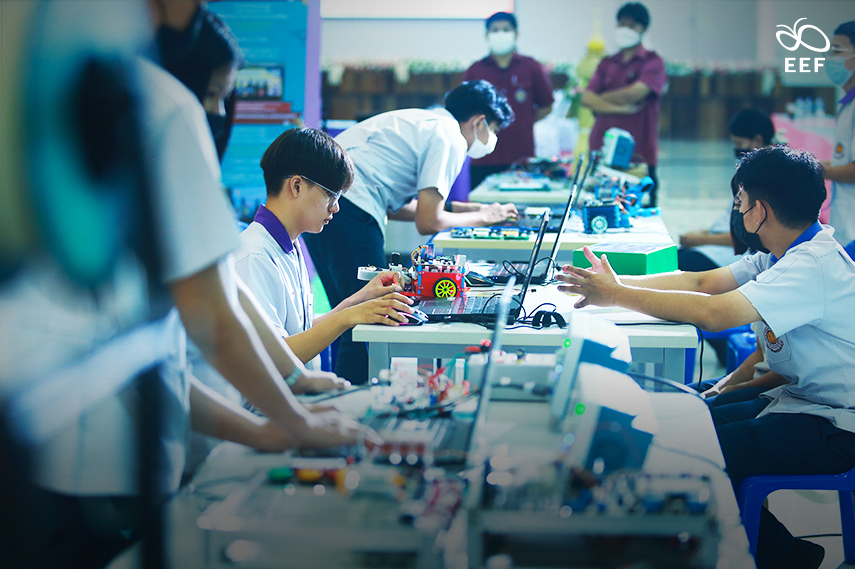
Urgent reforms are needed to address educational inequality and the rising number of out-of-school children. Vocational training offers a clear pathway to sustainable livelihoods, with initiatives like the High Vocational Innovation Scholarship providing rapid, viable career options for disadvantaged students. However, challenges such as limited support for low-income families and the need for stronger political will remain. Without sustained, focused efforts, Thailand risks being stuck in a cycle of short-term solutions. Alongside the first installment, this two-part series highlights the need for systemic change and calls for a comprehensive overhaul of the education system to create flexible, accessible, and inclusive pathways for all students, particularly those from disadvantaged backgrounds.
All For Education is all about people; only when all is in for education is Education For All. Join the movement to reduce educational inequality. Support the EEF by donating to fund research, partnerships, and assistance for children, youth, and adults in need of educational support. Click the link to contribute today and help create a society where education is open and equal for all. Together, we can make a lasting impact.
Click here for the first part of the series.

